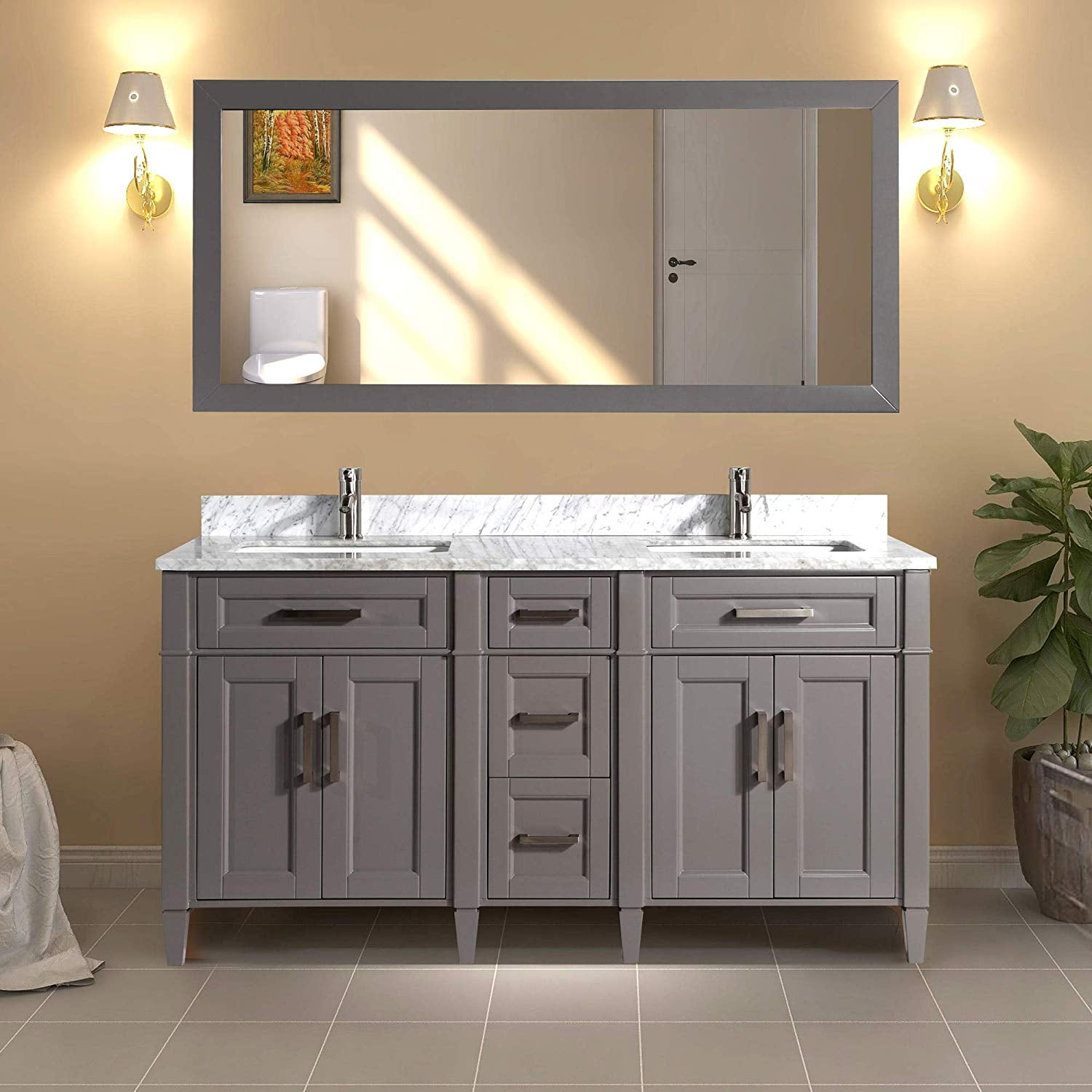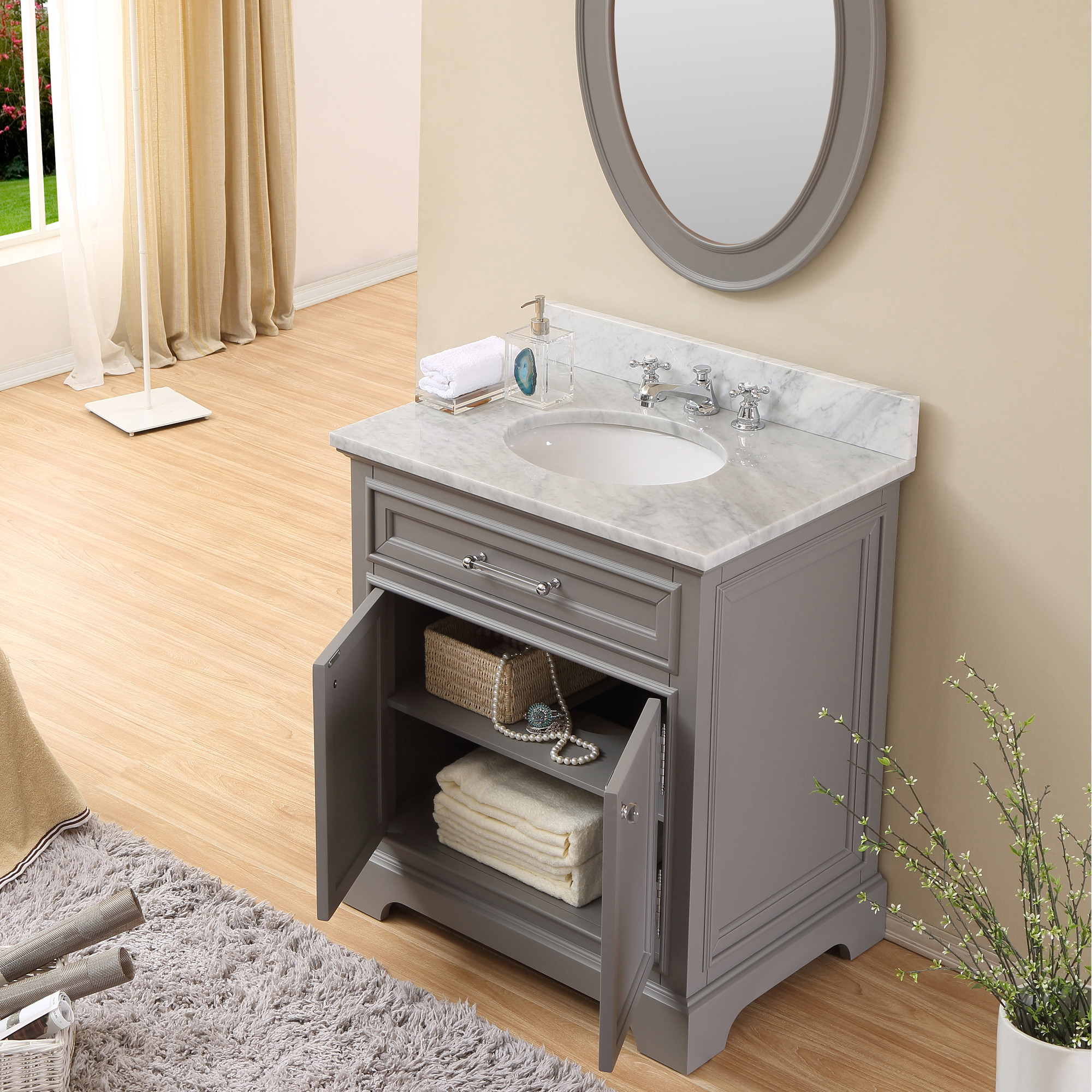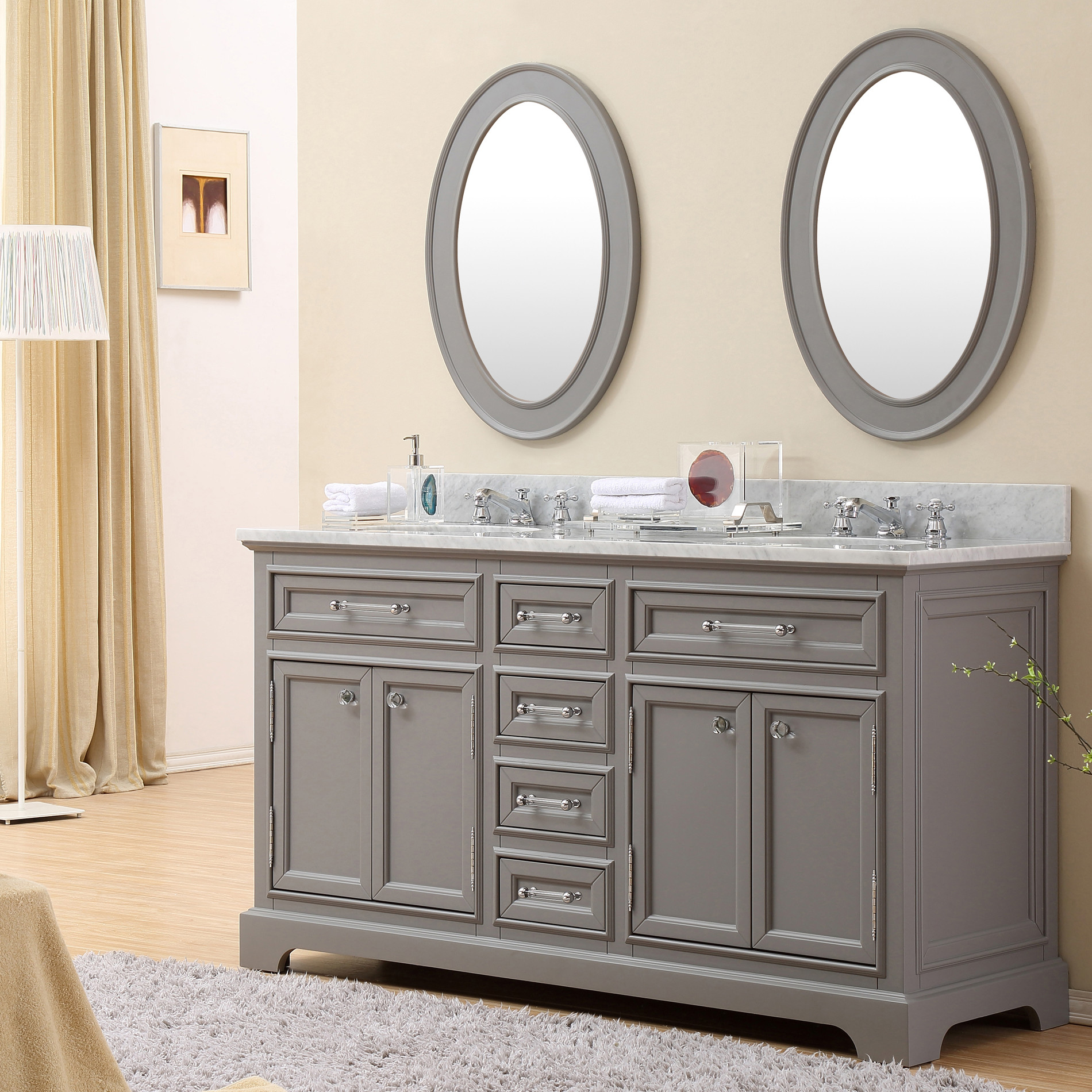Bathroom Vanity Units with Basin

The bathroom vanity unit with basin is a central element in any bathroom, serving both functional and aesthetic purposes. Selecting the right vanity unit is crucial for creating a bathroom that is both practical and visually appealing. This guide will provide a comprehensive overview of bathroom vanity units, covering their different types, materials, styles, and features. It will also offer insights on measuring your bathroom space and selecting the appropriate size and configuration for your vanity unit.
Types of Bathroom Vanity Units
Bathroom vanity units come in a wide range of styles and configurations, catering to diverse bathroom designs and preferences. Here are some common types:
- Single Vanity Units: These are the most basic type, featuring a single sink and countertop, suitable for smaller bathrooms or powder rooms. They are available in various widths, allowing for flexibility in space utilization.
- Double Vanity Units: Ideal for larger bathrooms, double vanity units offer two sinks and countertops, providing ample space for two people to get ready simultaneously. They are often preferred in master bathrooms or bathrooms shared by multiple individuals.
- Corner Vanity Units: These units are designed to fit into corner spaces, maximizing space utilization in smaller bathrooms. They offer a unique and efficient design solution for limited bathroom layouts.
- Wall-Mounted Vanity Units: These units are mounted directly to the wall, creating a minimalist and spacious look. They are particularly suitable for smaller bathrooms as they do not take up any floor space.
- Freestanding Vanity Units: These units are independent structures, offering a more traditional and elegant aesthetic. They are typically larger than wall-mounted units and can be placed anywhere in the bathroom.
Materials Used in Bathroom Vanity Units
The material of a vanity unit significantly influences its durability, style, and price. Here are some common materials used:
- Wood: Wood vanity units offer a classic and timeless look. They are available in various wood species, each with its unique grain pattern and color. Popular wood choices include oak, maple, cherry, and walnut.
- Laminate: Laminate vanity units are a cost-effective option that offers durability and resistance to moisture. They are available in a wide range of colors and finishes, mimicking the appearance of natural materials like wood or stone.
- Acrylic: Acrylic vanity units are known for their sleek and modern look. They are also highly durable and resistant to scratches and stains. Acrylic units are typically lighter than wood or laminate units.
- Stone: Stone vanity units, such as granite or marble, offer a luxurious and elegant appearance. They are highly durable and resistant to heat and scratches. However, stone units can be expensive and require proper maintenance.
- Metal: Metal vanity units, often made from stainless steel or aluminum, offer a contemporary and industrial look. They are durable and easy to clean but can be susceptible to scratches and dents.
Styles of Bathroom Vanity Units
Bathroom vanity units come in various styles to complement different bathroom designs. Some popular styles include:
- Traditional: Traditional vanity units feature classic designs with intricate details, such as ornate carvings, curved edges, and dark wood finishes. They create a timeless and elegant atmosphere in the bathroom.
- Modern: Modern vanity units emphasize clean lines, minimalist designs, and sleek finishes. They often feature chrome hardware, geometric shapes, and light-colored materials.
- Contemporary: Contemporary vanity units blend modern elements with traditional features, creating a unique and sophisticated look. They often feature natural materials, bold colors, and interesting textures.
- Rustic: Rustic vanity units evoke a sense of warmth and natural beauty. They are often made from reclaimed wood, featuring distressed finishes and exposed wood grain. They are perfect for creating a cozy and inviting atmosphere in the bathroom.
Features of Bathroom Vanity Units, Bathroom vanity units with basin
Bathroom vanity units can be equipped with various features to enhance their functionality and aesthetics. Here are some common features:
- Drawers and Cabinets: Vanity units typically come with drawers and cabinets for storing bathroom essentials, such as toiletries, towels, and medications. The number and size of drawers and cabinets vary depending on the size and style of the vanity unit.
- Countertop Material: The countertop material of a vanity unit plays a significant role in its functionality and aesthetics. Popular countertop materials include granite, marble, quartz, laminate, and acrylic.
- Sink Type: Bathroom vanity units can be equipped with various sink types, such as undermount sinks, vessel sinks, and drop-in sinks. Each sink type offers a different aesthetic and functionality.
- Hardware: The hardware of a vanity unit, including knobs, handles, and faucets, can significantly impact its style and functionality. Choose hardware that complements the overall design of the vanity unit and the bathroom.
- Lighting: Vanity units can be equipped with built-in lighting, such as under-cabinet lighting or mirror lighting, to enhance visibility and create a more functional and aesthetically pleasing bathroom.
Measuring Your Bathroom Space
Before selecting a bathroom vanity unit, it is essential to measure your bathroom space accurately. This will help you choose a vanity unit that fits comfortably and leaves adequate space for movement.
Measure the width and depth of the space where you plan to install the vanity unit.
Consider the size of the door opening and the width of the hallway to ensure the vanity unit can be easily transported and installed.
Measure the height of the space to determine the maximum height of the vanity unit.
Selecting the Right Size and Configuration
Once you have measured your bathroom space, you can start selecting the right size and configuration for your vanity unit.
Consider the number of people who will be using the bathroom and their individual needs.
Think about the amount of storage space you require and the type of storage solutions that would be most suitable for your needs.
Choose a vanity unit that complements the overall style of your bathroom and your personal preferences.
Essential Features of Bathroom Vanity Units with Basin

Bathroom vanity units with basins are essential fixtures in any bathroom, offering both functionality and style. Understanding the key features of these units can help you choose the perfect one for your needs and preferences.
Types of Basins
The basin is the most prominent feature of a vanity unit. Various basin types offer distinct advantages and disadvantages:
- Ceramic Basins: These are the most common type, known for their durability, affordability, and ease of cleaning. Ceramic basins are available in a wide range of styles and finishes.
- Glass Basins: Glass basins add a touch of elegance and modernity to any bathroom. They are often available in various colors and textures, but they can be more fragile and prone to scratches.
- Stone Basins: Stone basins, made from materials like granite or marble, are highly durable and luxurious. They are naturally resistant to scratches and stains, but they can be more expensive than other options.
- Acrylic Basins: Acrylic basins are lightweight, affordable, and available in various colors and designs. They are generally less durable than ceramic basins and may be prone to scratches.
Storage Options
Storage is a crucial aspect of bathroom vanity units. The type and amount of storage can significantly impact the unit’s functionality and organization.
- Drawers: Drawers provide ample storage space for toiletries, medications, and other bathroom essentials. They are often equipped with dividers or organizers to maximize space and keep items tidy.
- Cabinets: Cabinets offer a combination of open and closed storage. Open shelves can be used for displaying decorative items or storing frequently used items, while closed cabinets provide hidden storage for toiletries and other personal items.
- Shelves: Shelves are a simple and effective storage solution. They can be placed above the basin or within the vanity unit to provide additional storage space for towels, toiletries, or decorative items.
Countertops
The countertop of a bathroom vanity unit is a key design element. It should be durable, aesthetically pleasing, and easy to maintain.
- Materials: Common countertop materials include natural stone (granite, marble, quartz), engineered stone (quartzite, Silestone), laminate, and solid surface.
- Finishes: Countertop finishes can range from polished to matte, and they can influence the overall style of the bathroom. Polished finishes are more reflective and elegant, while matte finishes are more practical and less prone to showing fingerprints.
- Maintenance: Different countertop materials require different maintenance routines. Natural stone countertops may need to be sealed periodically to protect them from stains, while engineered stone countertops are generally more resistant to stains and scratches.
Choosing the Perfect Bathroom Vanity Unit with Basin: Bathroom Vanity Units With Basin

Selecting the right bathroom vanity unit is crucial for creating a functional and stylish bathroom space. A vanity unit serves as a focal point, providing storage and a platform for your sink. With numerous options available, choosing the perfect one requires careful consideration of your individual needs and preferences.
Factors to Consider When Choosing a Bathroom Vanity Unit
This section explores the key factors that will influence your decision, ensuring you find a vanity unit that meets your specific requirements.
- Budget: Vanity units come in a wide range of prices, from budget-friendly options to high-end luxury models. Determine your budget before you start shopping to narrow down your choices. Consider the cost of the vanity unit itself, as well as the cost of installation and any additional accessories you may need.
- Style: Bathroom vanity units are available in a variety of styles to complement different bathroom aesthetics. From traditional to contemporary, rustic to minimalist, choose a style that aligns with your overall bathroom design. Consider the color, finish, and materials of the vanity unit to ensure it seamlessly integrates with your existing decor.
- Functionality: Think about your storage needs and the layout of your bathroom. Consider the number of drawers and cabinets you require, as well as the size and configuration of the sink. For smaller bathrooms, a vanity unit with a smaller footprint and vertical storage may be ideal. Larger bathrooms offer more flexibility for larger vanity units with ample storage space.
- Space Constraints: Measure the available space in your bathroom carefully before selecting a vanity unit. Consider the width, depth, and height of the unit to ensure it fits comfortably in your designated area. Allow for adequate clearance around the vanity unit for movement and access.
Incorporating Vanity Units into Different Bathroom Layouts
This section provides guidance on integrating vanity units into various bathroom designs, maximizing functionality and aesthetics.
- Small Bathrooms: In limited spaces, choose a compact vanity unit with a smaller footprint. Consider a wall-mounted vanity to save floor space. Opt for a single-sink design or a smaller double-sink option if space allows. Utilize vertical storage solutions, such as tall cabinets or open shelves, to maximize storage capacity.
- Large Bathrooms: Larger bathrooms offer more flexibility in vanity unit selection. Consider a double-sink vanity unit for shared bathrooms or to create a spacious feel. Explore larger vanity units with ample storage space, including drawers, cabinets, and open shelves. You can even incorporate a vanity unit with a built-in mirror or integrated lighting for a cohesive look.
- Open-Concept Bathrooms: For open-concept bathrooms, choose a vanity unit that complements the overall design aesthetic. Consider a vanity unit with a sleek, modern design to create a seamless transition between spaces. Opt for a vanity unit with a built-in mirror or integrated lighting to enhance the visual flow of the bathroom.
